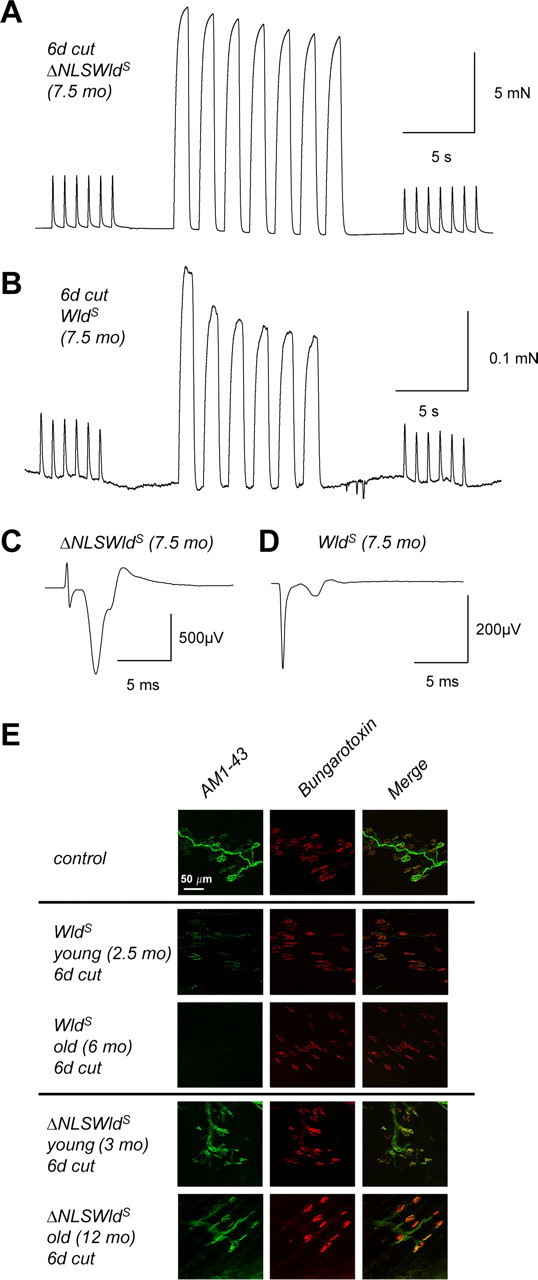Figure 5.

Maintained preservation of neuromuscular function in aged ΔNLS WldS transgenic mice. A, B, Recordings of FDB repetitive 1 Hz muscle twitch contractions and 20 Hz fused contractile responses, 6 d after sciatic nerve lesion from 7.5-month-old ΔNLS WldS transgenic (A) and age-matched native WldS mutant (B). Note the amplitude of isometric force generated by nerve stimulation in ΔNLS WldS is ∼50 times that of the native WldS. The fluctuating baseline discernible in B is due partly to the increased amplifier gain required to register the muscle response and partly to distributed asynchronous spontaneous contractions typically observed in axotomized WldS muscle. C, D, Averaged extracellular EMG recordings using nerve/muscle preparations from A and B. The initial spike is the stimulus artifact and the slower waves are produced by muscle fiber action potentials. Note the ∼10-fold greater amplitude of the evoked EMG response in ΔNLS WldS (C) compared with WldS (D). E, Representative confocal z-series projections of paraformaldehyde-fixed FDB nerve muscle preparations double labeled presynaptically with the activity-dependent nerve terminal dye AM1-43 and postsynaptically by the acetylcholine receptor marker TRITC-α-bungarotoxin. Colocalization of the green and red signals thus indicates functionally preserved NMJs.
